On January 1, 2014, the IRS enforced Revenue Ruling 2012-18 which defined tips vs service charges (aka Autograt) and clarified the tax implications of each. Almost 5 years later, it seems there is still some confusion among restaurant owners, employees, and customers. Service charges are usually implemented to ensure the certainty of tips for tipped employees working events or serving large groups. Although, restaurants are slowly evolving towards a tip free model entirely (a hot topic for another day). The distinction between tips and services charges is important because it has legal implications and materially affects tax reporting for the employer and employee. Here, we’ll let you in on what you need to know about service charges vs tips.
Defining Service Charge and Tips
Let’s begin with definitions, then continue with the impact on employees, employers, and customers. According to Revenue Ruling 2012-18, the absence of any of the following factors may indicate that a gratuity (or amount paid in excess of the price of a meal + tax) is a service charge:
- the payment must be made free from compulsion
- the customer must have the unrestricted right to determine the amount
- the payment should not be the subject of negotiation or dictated by employer policy
- the customer has the right to determine who receives the payment
All of the surrounding facts and circumstances must be considered, but there’s very little gray area when differentiating between tips and services charges. In application, if the payment is not the customer’s decision, then it is not a tip. For example, a mandatory 18% service charge for groups of 10 or more is considered a service charge because it’s required by the restaurant. Alternatively, a suggested tip line is considered tips, not service charges because the tip and the amount are the customer’s decision.
Why it matters?
Sales Tax
Most states (including DC) require that the customer pay sales tax on the order total including service charges. For example, if the customer purchases $1,000 of food and drinks, subject to a 20% Autograt, they will pay sales tax on $1,200 instead of $1,000. In DC (sales tax rate of 10%), this would result in an additional $20 in sales tax on a $1,000 order. This differs from a tipping structure, where customers generally calculate tips on the order total not including service charges.
Rights and Classification
Tips are property of employees. Employees can voluntarily participate in a tip pool or tip sharing agreement amongst each other to ensure the tips are split fairly between their team. Employers will typically facilitate this arrangement by collecting the tips, calculating the split, then distributing to employees in a systemized manner (such as payroll). This process ensures that employees are reporting tips to the employer for tax purposes, as well. If tips are collected from employees and distributed as discussed above, then they’re recorded as a liability on the restaurants’ books. Upon distributing or paying out the tips, the liability is reduced. The P&L is not affected by tips. This is a common misunderstanding among new restaurant owners.
On the contrary, service charges are property of the employer. Service charges are distributed or paid out to employees at the employer’s discretion. As a result, they are reported as revenue on the P&L, and the amounts paid out to employees are recorded as an expense on the P&L. Many restaurants incorrectly process service charges like tips for payroll and P&L reporting.
Income Taxes
Employees must report all tips to their employer unless the total is less than $20. The employer is required to report tips plus wages earned by employees to the IRS through payroll tax filings such as 941s, W-2s, Form 8027, etc. The employee is then subject to income tax and FICA (6.2% Social Security up to max wage base plus 1.45% Medicare) on these earnings, which is withheld by the employer and remitted through payroll tax filings. In addition, the employer pays FICA, SUI (state unemployment), and FUTA (federal unemployment) on these earnings.
Since most tips are charged to a credit card nowadays, this reporting process is being streamlined and facilitated by the restaurant using their POS, tip pooling process, and payroll system. If an employee fails to report tips to their employer, the employee is liable for their share of FICA and income tax on those tips, not the employer.
Tip Credit
The tip credit allows employers to pay their tipped employees as low as $2.13/hr as long as they receive $7.25/hr including tips. These minimum wage amounts differ for each state.
Employers receive a dollar for dollar tax credit for all FICA taxes paid on tips in excess of minimum wage ($7.25/hr). This is known as the FICA tip credit. Since service charges paid out to employees do not count towards the tip credit, they don’t qualify for the FICA tip credit. In other words, employers pay FICA on all service charges paid out in excess of the federal minimum wage; an amount that would effectively not be owed if the amounts were tips.
Conclusion
The distinction between tips and service charges can have significant legal and tax implications. The appropriate policies, procedures, and systems should be implemented to ensure managers are reporting this information correctly. Disclosures and notices should be provided to employees to ensure that employees are fully aware of the payment structure and policies of the restaurant. If you’re interested in guidance, please feel free to contact us.
Article by: Raffi Yousefian, CPA, Principal at RY CPAs








